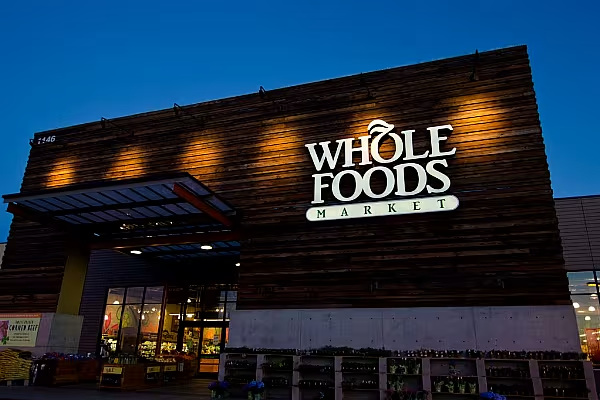Less than a year after closing its acquisition of Whole Foods, Amazon is looking for fresh ways to expand its brick-and-mortar retail network while bolstering the online shopping business.
The world’s largest online retailer is searching for bigger Whole Foods locations in cities that can serve as both grocery stores and urban distribution centres for delivering goods to online shoppers more quickly, said a person briefed on the plans.
Amazon is seeking more retail space that can accommodate grocery aisles and storage for the most popular items purchased from Amazon’s website, like consumer electronics, bestselling books and yoga pants.
Whole Foods is also working with Regency Centers, one of its largest landlords, on a project to convert parking areas at existing stores into stalls for Amazon delivery contractors to load up their orders, said the person, who asked not to be identified because the initiative is private.
A spokeswoman for Whole Foods declined to comment, and Amazon didn’t respond to requests for comment.
John Nahas, vice president of investments for Regency Centers, confirmed that Whole Foods representatives have asked for larger retail spaces and parking stall installations in areas with high concentrations of Amazon Prime subscribers.
Regency Centers owns and oversees 28 Whole Foods properties across the US. “We continue to see signs of Amazon’s further integration with Whole Foods,” Nahas said.
Retail Investment
Amazon’s investment in physical retail is partly designed to lift the online shopping business. The company began rolling out two-hour delivery of groceries from Whole Foods stores in the US last month.
It currently maintains separate warehouses for orders of non-grocery items. Combining them could help Amazon cut costs and deliver goods more quickly. The plan would more deeply integrate the business Amazon acquired last year for $13.7 billion.
Walmart has been experimenting with new ways to use its vast store presence to give shoppers quick access to online orders. Amazon wants more spaces to store goods close to customers to complement its huge warehouses on the outskirts of big cities.
The urban spaces are needed to expand the selection offered through the two-hour Prime Now delivery service, which currently carries a limited inventory comparable with what’s found in convenience stores or drug stores.
Transitioning more orders to Prime Now would help Amazon reduce its reliance on UPS, DHL and other traditional package handlers. Amazon has contract workers shuttle local deliveries in their own cars, similar to the model used by Uber Technologies and Instacart.
Expansion Plans
Whole Foods, which has more than 470 locations, began exploring the potential for significantly larger stores around the time of the acquisition talks with Amazon last year.
While the average Whole Foods store is about 39,800 square feet now, the retailer asked Regency Centers and other landlords to scout locations of 50,000 to 80,000 square feet, said the person briefed on the plans.
In February, Whole Foods signed a lease for a 55,000-square-foot property in Long Beach, California. The new mega-store, which is expected to open in 2019, is adjacent to an existing Whole Foods that’s less than 26,000 square feet and is likely slated for closing, the person said.
In some Whole Foods stockrooms in Southern California, Amazon has already started stockpiling top-selling online items in the past few weeks.
It’s unclear whether redesigned Whole Foods locations would keep non-grocery items in a backroom for delivery workers or someday let customers browse them in-store. The latter approach would pose a direct challenge to retailers such as Best Buy Co.
This month, members of Whole Foods’ real estate team asked Regency Centers to repurpose as many as six parking spaces near the front and back entrances of some Whole Foods locations, said the person. The spaces will be held for Amazon’s fleet of delivery drivers. Amazon estimates each delivery contractor will require no more than 10 minutes to pick up prepackaged orders, said the person.
Parking lots at Whole Foods stores in many major cities are already too crowded. A move to eliminate spots is an apparent bet that more customers will choose to get groceries delivered to their homes and avoid the store entirely.
News by Bloomberg, edited by ESM. Click subscribe to sign up to ESM: The European Supermarket Magazine.














